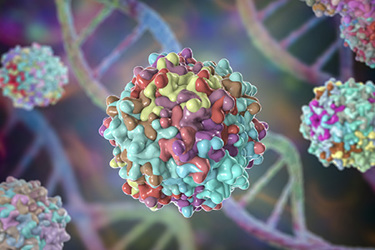Safer AAV Through Reduced Host-Cell DNA Encapsidation: The Next Generation Of ELEVECTA™ Producer Cell Lines
By H Kewes, T Bonifert, M Krieger, and M Hussong

The ELEVECTA™ producer cell line delivers highly productive, fully scalable, and inducible stable rAAV producer cell lines, facilitating robust and high-yield rAAV manufacturing. By utilizing the ELEVECTA producer cell line, there is no reliance on transient transfection or helper virus infection. Recent advancements in this platform have further enhanced rAAV safety by significantly reducing host cell DNA (hcDNA) encapsidation.
While most hcDNA molecules outside AAV particles can be eliminated during downstream processing, encapsidated hcDNA molecules pose a challenge as they remain largely undetectable during this process. The similarity between the desired rAAV product and the undesired molecular variant carrying hcDNA alongside the vector genome complicates purification efforts. Additionally, residual "empty" or "partial" capsids in the final product may also contain hcDNA.
Although any impurities are cause for concern, encapsidated DNA is particularly concerning as it is likely to be delivered directly into the patient's cells, potentially acting immunogenic in the cytosol and oncogenic in the nucleus. Learn how this critical issue has been effectively addressed through the successful reduction of hcDNA co-packaging to levels below quantification limits, demonstrated to be successful in both stable and transient AAV production settings.
Get unlimited access to:
Enter your credentials below to log in. Not yet a member of Biosimilar Development? Subscribe today.
